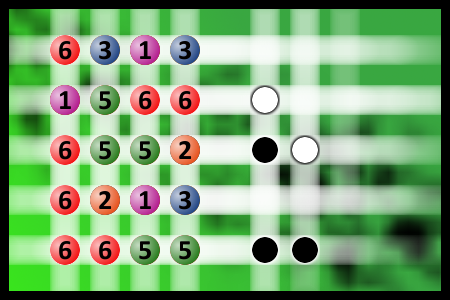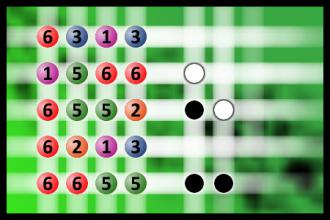Find the right combination
The computer chose a secret code (sequence of 4 digits from 1 to 6). Your goal is to find that code. Black circles indicate the number of hits on the right spot. White circles indicate the number of hits on the wrong spot.Correct answers: 58
The first user who solved this task is Darko Nesovic.
#brainteasers #mastermind

A man standing at a bus stop w...
A man standing at a bus stop was eating a hamburger. Next to him stood a lady with her little dog, which became very excited at the smell of the man's supper and began whining and jumping up at him.
The man noticed this, in fact he was getting rather annoyed at the dog.
"Do you mind if I throw him a bit?" said the man to the lady.
"Not at all," she replied, whereupon the man picked the dog up and threw it over a wall.
The man noticed this, in fact he was getting rather annoyed at the dog.
"Do you mind if I throw him a bit?" said the man to the lady.
"Not at all," she replied, whereupon the man picked the dog up and threw it over a wall.

